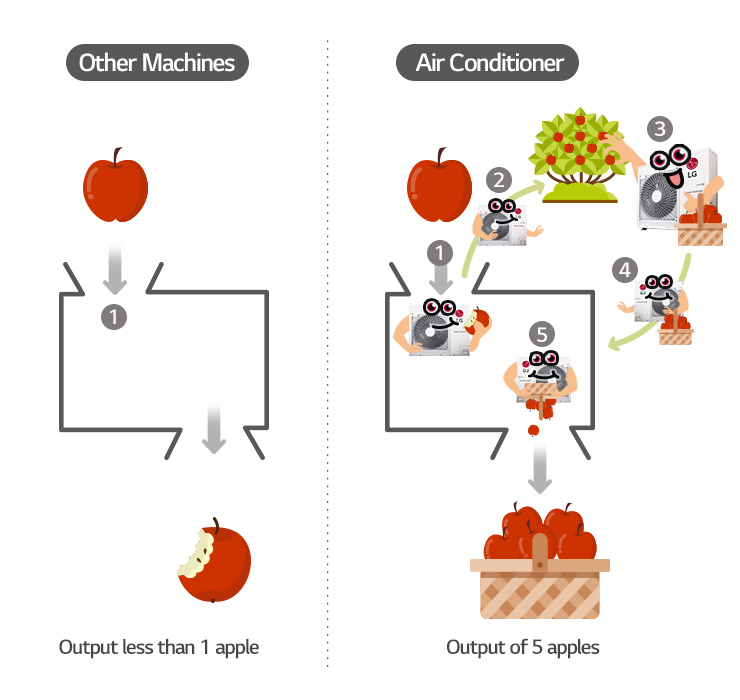When selecting an air conditioner, efficiency is one of the most important factors to be considered. But how do we define efficiency and what standards can we trust when looking for the most efficient products? Standards can vary depending on where we live and there are a wide range of terms that we must understand in order to make informed decisions. In recent years, governing bodies and HVAC standards organizations have made efforts to create universal standards that we can use to easily establish the efficiency of HVAC products.
However, these standards can still vary depending on the regions in which we live and certain standards take into account additional factors to provide a more precise efficiency index. Let’s take a look at some of these global efficiency standards.
COP
First, we should discuss 2 long standing efficiency index standards. The term COP (Coefficient of Performance) can be simply defined as the ratio of heating or cooling generated verses the amount of work required to generate that heating or cooling. COP is commonly used as an index for heating efficiency. The reason COP is used as an index of performance of HVAC equipment is because HVAC products are not energy converters like many other electronic devices that produce power with the energy they consume. HVAC systems are energy transfer devices that can actually exceed 100% efficiency in some cases without violating the laws of thermodynamics. This phenomenon is possible because the amount of heat that is transferred in an HVAC system can exceed the amount of power required by the system. Simply put, if an HVAC unit produces 5kW of heating from 1kW of electricity, the COP of that unit is 5.0. The higher the COP of a system, the higher its efficiency.

HVAC systems can cycle energy to deliver over 100% energy output efficiency expressed as COP
EER
The term EER stands for Energy Efficiency Ratio and can be defined as the ratio of cooling capacity (measured in Btu) to the amount of energy consumed (Wh). When we talk about the size of an HVAC system, we refer to its output capacity. If a 10,000 Btu system consumes 1,200Wh of electricity, the EER rating of that system would be 8.3 (10,000/1,200). This index is more commonly used for measuring the cooling efficiency of a system in a constant state. EER is useful in comparing efficiencies of systems at face value without calculating for environmental factors.
SEER
More recently, another efficiency index has been adopted in many parts of the world. SEER stands for Seasonal Energy Efficiency Ratio. The index is used to represent the ratio of cooling output of an HVAC system over a specified season (measured in Btu) verses the energy it consumes (Wh) over that season. It is calculated utilizing a constant indoor temperature and varying outdoor temperatures and also factors in average household energy usage, which, of course, varies by country and region. The higher the SEER value of an HVAC unit, the higher its efficiency. The SEER scale typically ranges from 8 to 30 but this value is calculated using very specific parameters for specific conditions as described above. So, while SEER is not as useful as a universal index for comparing efficiencies, it is a more comprehensive index for expressing efficiency of an inverter in specific real-life conditions.
As we can see, these HVAC efficiency index standards each provide benefits in assessing which HVAC unit or system is right for our homes, offices or industrial spaces. We see these ratings posted on products, but now we can be certain about how these indices should impact what we purchase. With this information, we can hopefully make more informed choices and understand our air conditioning and heating systems a little better. Keep a lookout for COP, EER and SEER ratings the next time you are on the market for an HVAC system and take a look at LG HVAC product energy ratings here.


































